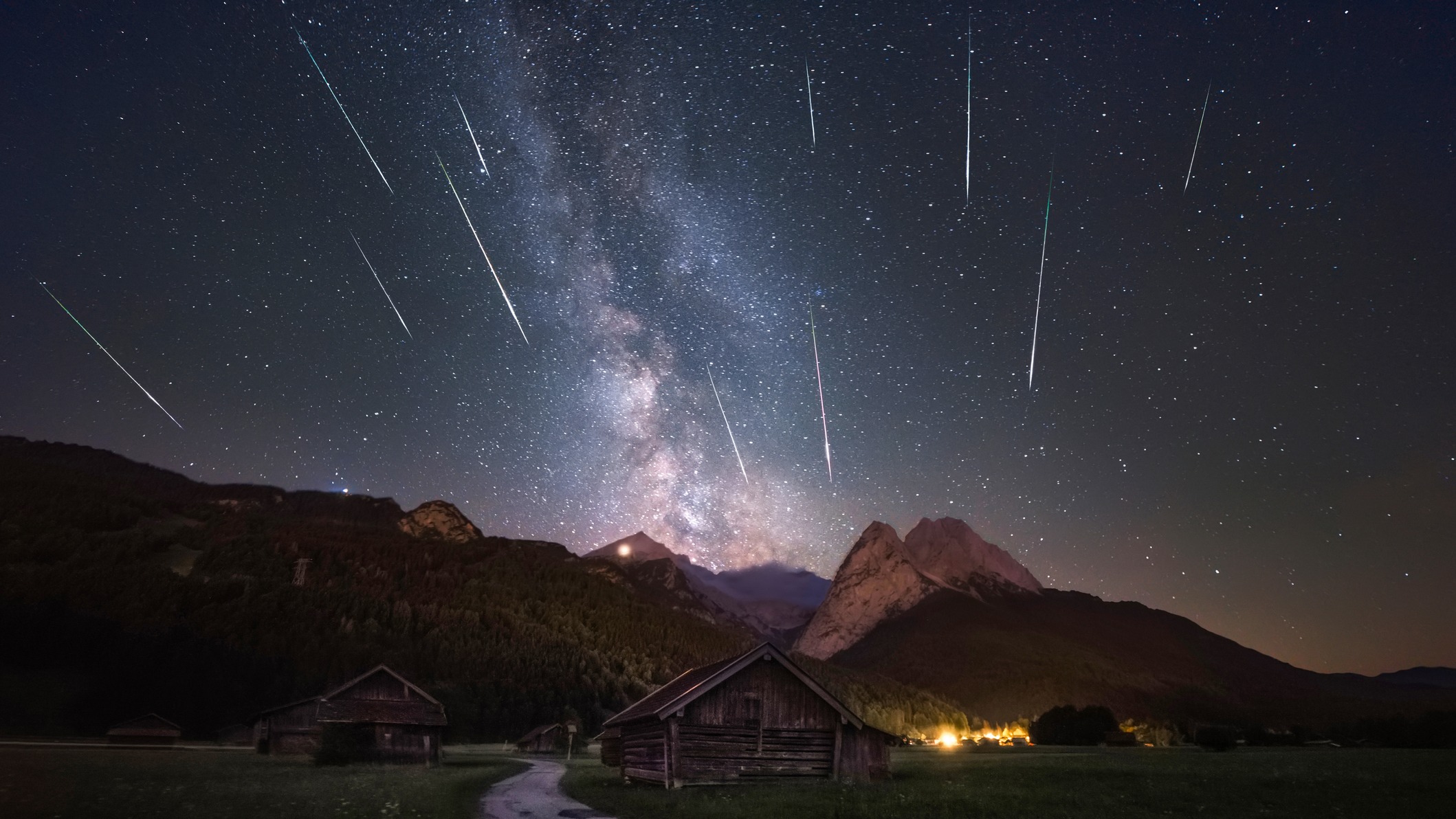
Miguel Claro is a professional photographer, author and science communicator based in Lisbon, Portugal, who creates spectacular images of the night sky. As a European Southern Observatory Photo Ambassador and member of The World At Night and the official astrophotographer of the Dark Sky Alqueva Reserve, he specializes in astronomical "Skyscapes" that connect both Earth and the night sky. Join Miguel here as he takes us through his new video, "Make A Wish ... The Perseids are Coming."
The Perseid meteor shower is coming, with a peak happening this weekend (Aug. 12-13).
The spectacular meteor shower or "shooting star" show has an estimated average of 100 meteors per hour, and is one of the best of the year. This year, the new moon will help with the night show visibility.
Claro's stunning video shows meteors accurately aligned with the stars in a 360-degree virtual reality scene. I captured it during the Perseids show in 2021, from one of our dark skies in Portugal. Do watch it with sound on.
Related: Perseid meteor shower 2023: When, where & how to see it
Read more: Meteor showers 2023: When is the next one?


Looking for a telescope? We recommend the Celestron Astro Fi 102 as the top pick in our best beginner's telescope guide.
Meteor showers are events stemming from swarms of meteors. Meteors are flecks of dust, often from asteroids or comets, flying into Earth's atmosphere at high speed. The Perseid meteors appear to come from a spot, or radiant, in the Perseus constellation. The Perseids' actual source in space, however, is Comet Swift-Tuttle.
The Perseids tend to be most visible late in the night, and you can see them best from about 45 degrees away from the radiant. Look in any direction up to the zenith — that's straight up. If you're looking for a good spot to watch, try to find dark places like Dark Sky Alqueva Reserve in Portugal.
Ready to explore the sky with top-notch equipment? Check out our guides on the best telescopes and best binoculars. You can also get great imaging gear using the best cameras for astrophotography and best lenses for astrophotography.
To see more of Miguel Claro's work, please see his website or follow his stories on Instagram at www.instagram.com/miguel_claro.
Editor's Note: If you snap your own photos of the sky and would like to share them with Space.com's readers, send your photo(s), comments, and your name and location to spacephotos@space.com.







